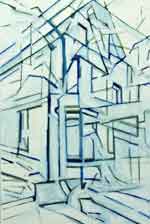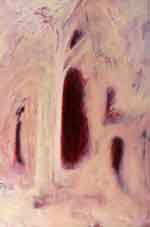Introduction: The New Plagiarism
Could electronic text spawn a virulent strain of student copying?
Is cut-and-paste the enemy of thought?
Many teachers who work in "wired schools" are complaining that new technologies have made it all too easy for students to gather the ideas of others and present them as their own.
The New York Times reports that "cheating is on the rise." (Go to September 16, 1998 article)
The New Plagiarism may be worse than the old because students now wield an Electronic Shovel that makes it possible to find and save huge chunks of information with little reading, effort or originality.
Is the New Plagiarism any worse than the old?
Under the old system of "go find out about" topical research, it took students a huge amount of time to move words from the encyclopedia pages onto white index cards, changing one word in each sentence so as to avoid plagiarism.
The New Plagiarism requires little effort and is geometrically more powerful. While the pre-modem student might misappropriate a dozen ideas from a handful of thinkers, the post-modem student can download and save hundreds of pages per hour. We have moved from the horse and buggy days of plagiarism to the Space Age without stopping for the horse less carriage.
As this article will point out, it is reckless and irresponsible to continue requiring topical "go find out about" research projects in this new electronic context. To do so extends an invitation (perhaps even a demand) to "binge" on information.
We have more to worry about here than the Web sites that offer term papers for sale (visit WWW.A1-Termpaper.Com) or the sites that offer assistance with college essays.
What we have is a societal shift toward glib and facile understandings allied with an archaic school research program (in some places) that places little value upon questioning and original thought.
The seven antidotes offered below are intended to cut off the virulent new strain of plagiarism before it becomes an academic plague.
Antidote 1 - Distinguish between levels and types of research.
In moving beyond the topical research that has held students back so long, we must help all teachers and students to see the difference between three levels of research and help them to see the value (even necessity) of playing down the first two levels in favor of the third.
- Level One Research
"Just the Facts"
- In these kinds of projects and quests, the student is expected to gather basic facts and information about a state or a city or a country or a battle or a general or a writer or a scientist. Little thinking is required. This is information gathering at its crudest and simplest level.
Level Two Research
"Other People's Ideas"
- Even though these kinds of projects may engage students in considering important questions such as the causes of acid rain or overpopulation, it is sufficient for the student to gather "conventional thinking" and the best ideas of others. These are the research projects most likely to inspire plagiarism as the student gathers other people's ideas and then passes them off as her or his own.
Level Three Research
New Ideas & Synthesis
"In My Humble Opinion"When we require fresh thinking, we stand the least risk of suborning plagiarism. If students cannot find the answers but must make the answers, they are less apt to pass off others' ideas as their own. The secret is to pose or ask students to pose questions or problems and decisions which have never been adequately answered.How do we restore peace to Northern Ireland?
Antidote 2 - Discourage "trivial pursuits."
Even though students must learn how to find discrete facts such as the population of Chile or France, we have labored too long in those vineyards.
We need fewer treasure and scavenger hunts. It is time to emphasize questions which challenge students at the top of Bloom's Taxonomy.
We launch projects which require:
- Explanations
- Problem-solving
- Choices & Decision-Making
We build our programs around what I called The Prime Questions in the October, 1997 issue of From Now On, "The Question is the Answer:" http://fno.org/oct97/question.html
We transform topical research into projects which demand that students move past mere gathering of information to the construction of new meanings and insight.
- Example: Instead of asking why events turned out particular ways in our past (a question fraught with plagiaristic opportunities since historians have probably already offered answers), we might ask students to hypothesize why various outcomes did not occur.
-
- Example: Instead of asking how we might protect an endangered species whose chances have already been improved (the bald eagle), we might focus on one which no one has managed to protect (various Australian marsupials, for example).
- Example: Instead of asking students to study a single country or city, we might ask them to decide which is best for various purposes (the Winter Olympics, a university degree, the building of a theme park, etc.).
Students become producers of insight and ideas rather than mere consumers.
Antidote 3 - Emphasize essential questions.
Essential questions are questions worth asking, questions that touch upon basic human issues or touch matters of the heart and the soul. Often as not, they spawn inquiries that might extend over a month or a lifetime . . . investigations that might make a difference in the quality of life . . . studies that might cast light in dark corners, illuminating basic truths.
The term essential question was popularized by the Coalition of Essential Schools that makes such questions the object of most student work and study.
These essential questions are not immune to plagiarism, since the world's greatest thinkers may have "had their turn" at proposing answers, but combined with the next three antidotes, they can be quite effective as inspiration for originality.
Resources
- The Question is the Answer
- A Questioning Toolkit
- The Toolbox: Engendering Student Questions
- The Research Cycle
- A Picture is Worth a Thousand Words: Graphical Organizers as Thinking Technology
- Telling Questions and the Search for INSIGHT
Antidote 4 - Require and enable students to make their own answers.
We need to ask students to make up their own minds and do their own thinking.
But first schools must do a far better job of equipping students with questioning skills as well as a strong foundation in synthesis [the process of altering and modifying the elements of anything until it has been significantly changed or improved].
Synthesis has been explored repeatedly in articles such as
Deep Reading and Deep Thinking in an Age of Info-Glut
Synthesis can be taught. Note how the painter below employs synthesis to provide six different versions of the same house. What changes has she made and which elements have remained virtually untouched?
© 1998, Sarah McKenzie, all rights reserved. These images may not be reproduced, duplicated, printed, copied, or published in any form without the explicit permission of the artist. Contact Sarah McKenzie http://sarahmckenzie.com
While some claim that "There are no new ideas under the sun," our students must learn how to apply some extra color or tone it down. They must learn to see the underlying structure and then construct or deconstruct the original until it shimmers with originality.
Antidote 5 - Focus upon systematic storage.
We expect students to keep pertinent information only. And we want them to be planning ahead for retrieval at a later stage.
"How can I organize my findings so I can make sense of them later on?"
Information in electronic forms is much easier to store and organize for later review than printed material. As much as possible we want our students to know how to take notes electronically, cutting and pasting when appropriate, paraphrasing when desirable. We also want them to be able to search their findings months later with some efficiency and power.
Students are extracting, paraphrasing, summarizing & extending the information they have found with eyes directly focused upon the essential question.
At the same time, they are citing the source of their information and ideas.
The information will be more valuable later if it sits within the computer rather than being buried in a pile of hundreds of pages of printed material.
We show students how to take notes with a database program.
They set up the database with sections or fields within which they will be entering your findings.
A standard format may look something like this, but students may tailor it to fit the subject.
Subject Words
It pays to teach your students how to develop a relatively brief list of subject words drawn from their cluster diagram. In order to show them the power of a well constructed database, you should give them a chance to explore the searching capabilities of one you have constructed. Show them how subject words support the sorting and sifting which will later help them make meaning of their findings.
If we were comparing three cities, for example, we might use crime, weather, shopping and employment along with each city's name as subject words.
Keywords
Demonstrate for your students that keywords offer a greater level of detail and work at the sub category level below subject words.
If we were researching crime (from above) in three cities, for example, we might use statistics, murder, trends, violent, prevention and property as keywords.
Abstract
The abstract is where students save pertinent information. We must teach them to paraphrase and condense, avoiding the cutting and pasting of huge (often unread) blocks of text.
Antidote 6 - Stress "green ink" and citation ethics.
If we hope to witness our students producing fresh thinking, then we need to award credit for smart collecting but also show them how to differentiate between the ideas they have collected from others and those ideas which have emerged in reaction to the ideas of others.
They may change colors while note-taking to signify and separate.
Black text signifies the ideas of others.
Green text signifies fresh thinking.
We award credit for originality, noting each new contribution.
Example . . .
|
Source: May, 1998, From Now On, Jamie McKenzie, "The New Plagiarism: Seven Antidotes to Prevent Highway Robbery in an Electronic Age." http://fno.org/may98/cov98may.html
|
| Subject: research, plagiarism, strategies |
| Keywords: incentives, rewards |
| Abstract: McKenzie suggests the use of green ink to help student differentiate between the ideas they have collected and the new ideas they have built in reaction to those inspirations.
Reminds me a bit of art with "found objects." Here we have "found ideas" and "fresh ideas." I like students having to keep them separate. I could then look over their shoulders while they did research to see what kinds of balance might emerge. It might change how I did assessment?
|
|
|
The teacher acts like a "guide on the side" acknowledging the good new ideas as they appear on the screen. [see "The WIRED Classroom" for more on "guide on the side"]
Antidote 7 - Assess progress throughout the entire research process.
If we seek an end to plagiarism, then we keep an eye on the note-taking and idea development as they evolve. We encourage, we provide nudges, we congratulate and we (occasionally) light fires. We do not wait until the end to let our students know how they are doing.
More importantly, we provide clear rubrics [example] for valued behaviors so that students make take a hand at self-assessment.
- Building Upon Others' Ideas
- A researcher reads with the intent of extending and augmenting the ideas of others.
- 5 - Pushes "found ideas" well beyond their original boundaries
- 3 - Adjusts and elaborates upon "found ideas"
- 1 - Translates and summarizes without adding
A strong commitment to ongoing assessment which emphasizes the importance of original thought can provide a powerful incentive to minimize plagiarism.







